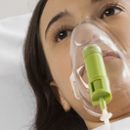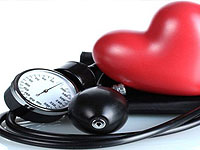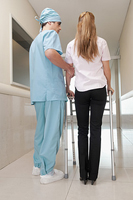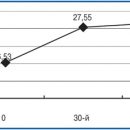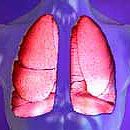Meningitis is an extremely dangerous disease. It is especially difficult for children and they also cause severe complications that can lead to mental retardation. That is why it is so important in time to recognize the disease. Read more about meningitis in children read in the article.
Content
Meningitis is inflammation of soft brain shells (tissues covering and protecting the head and spinal cord). Along with usually with inflammatory protective tissues, it can also be amazed and brain.
Although meningitis can develop at any age, the babies and children of younger suffer mostly suffer from him. The risk of developing meningitis is slightly higher for bale boys than infant girls. Peak incidence of meningitis most often falls on the summer months. The severity and duration of the course of the disease depends on the age of the child, the general state of his health before the start of the disease and the speed of the beginning of treatment. Meningitis can lead to a rapid sharp deterioration and make life-threatening character in cases of lack of treatment, improper treatment and too late treatment.
Two main forms of meningitis distinguish: viral and bacterial. Usually viral meningitis are caused by widespread types of viruses; Bacterial - proceeds more hard and can cause long-term complications. Bacterial meningitis is a potentially most powerful and damaging organism infection.
Viral meningitis is usually associated with a previously developed viral infection, which initially manifested itself as an infectious damage to the nose and throat, stomach or intestines, or as another version of fast-flowing virus infections. Usually viral meningitis lasts less than 2 weeks; In light cases, recovery begins on the 3rd or 4th day. The complete recovery of children with viral meningitis is observed almost always, although the most temporary nature of muscle weakness and violation of coordination of movements may develop.
Bacterial meningitis is especially dangerous for babies under the six-month age. Children under the age of one month are emphasized by high risk of developing the life of the disease when patients with patients. Over the past half a century, mortality associated with bacterial meningitis has sharply decreased. The older children, the lower the mortality rate caused by meningitis.
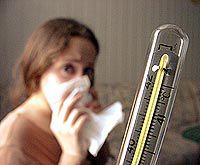 Common to all types of meningitis symptoms are: nausea, vomiting, not bringing relief, stubborn headache, back pain, muscle tension zoddle, loss of appetite, light sensitivity, lethargy and irritability. Temperature usually holds within 37.5-38.5 degrees.
Common to all types of meningitis symptoms are: nausea, vomiting, not bringing relief, stubborn headache, back pain, muscle tension zoddle, loss of appetite, light sensitivity, lethargy and irritability. Temperature usually holds within 37.5-38.5 degrees.
In cases of viral meningitis, striking children over 10 years old, symptoms may appear completely suddenly. Children aged 2 to 10 years often, fever is often developing and only then drowsiness and irritability appear. Babies can only have irritability and detect rather and binding rather than elastic spring (soft place on the scalp). Previously, or simultaneously with other syptoms of aseptic meningitis in children of any age, rash may appear.
In the case of bacterial meningitis, fever is developing first, and then other characteristic symptoms appear. Muscular pain may be present, as well as respiratory disorders and digestion. A common symptom among older children with bacterial meningitis is a headache, as well as discovering spring. Seizures seizures, drowsiness and unconscious condition.
Diagnosis of meningitis in children
Meningitis is diagnosed with doctor. After the detection of characteristic symptoms and child surveys, the doctor can confirm the diagnosis, conducting a lumbar puncture, sometimes called the spinal puncture. A small sterile needle is introduced into the spinal channel containing the cerebrospinal fluid. The injection is always done at the bottom of the back, under the lower end of the spinal cord, to avoid possible damage to the nerves. Take a small sample of the cerebrospinal fluid and analyzed for the presence of blood cells and infectious organisms, and also measure the content of protein and blood sugar.
Bacterial meningitis can cause a certain number of unusual, sometimes long complications. Among the most frequent and heavy - seizures, paralysis, blindness, hearing loss and mental retardation. Learning problems often arise as the consequence of bacterial meningitis, but usually they are insignificant. With many complications over time, improvement comes, depending on both gravity of the suffered infection, and on the quality of long-term care and treatment required by the child. Disease Return may occur if a child with bacterial meningitis will not receive a full course of treatment with the necessary drugs.
After the doctor determines the diagnosis of viral meningitis, many children are treated at home. It is necessary to give a child in bed and abundant drink. However, if the amount of urine is significantly reduced, this may indicate a hormonal disorder, weakening the kidney function. This should be notified by the doctor, since it may be necessary to temporarily limit the reception of the fluid. In severe cases, treatment is carried out in the hospital.
Each baby or child sick with bacterial meningitis must be hospitalized. In accordance with what specific bacteria caused a disease, antibiotics are prescribed. They are introduced at least 10 days; at least within a few days after the end of fever. Continuing the condition of the patient (pulse frequency, blood pressure, breathing rate and temperature). It is necessary to monitor the ratio of the drinking and secreted fluid for protection against fluid delay in the patient's body. In the event of convulsive seizures, anticonvulsant drugs are prescribed.
It should be immediately appreciated for medical care in the event of a child's development of vomiting that does not bring relief, high temperature (from 38.3 to 41.1 degrees), muscle tension head and emergency drowsiness. Meningitis can start suddenly and quickly progress, and complete health restoration often depends on how the diagnosis is quick and the treatment will begin.


